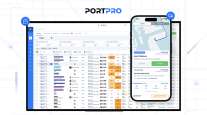Groups Ask FMCSA to Streamline Intermodal Interchange
By Rip Watson, Senior Reporter
This story appears in the April 26 print edition of Transport Topics. Click here to subscribe today.
Trade groups representing ocean carriers and lessors that provide chassis to drayage carriers have asked the Federal Motor Carrier Safety Administration to streamline the intermodal interchange process and cut down on paperwork for truckers.
The Ocean Carrier Equipment Management Association and the Institute of International Container Lessors asked FMCSA to eliminate a requirement that truckers file equipment condition reports every time they return a chassis to the equipment owner, whether the equipment has been damaged or not. Instead, the groups said the reports should only have to be filed if there is damage or a defect on the chassis.
The change is needed, the groups said, because 96% of chassis aren’t damaged or defective. They estimated that truckers would waste about 2 million hours annually filling out 38 million driver vehicle inspection reports, or DVIRs, about chassis that don’t require any repairs.
“The added administrative burdens of the requirement to file no-defect DVIRs could undermine the goal of safe intermodal equipment,” the groups argued. “A no-defect DVIR does not add in any meaningful way to the safety of intermodal equipment.”
The groups’ April 15 filing also said a requirement to file reports with no defects “adds cost to intermodal operations, adds to the time spent by motor carriers submitting reports and drastically increases the number of reports intermodal equipment providers must process and store.”
The filing was made as the agency considers how it intends to implement final rules that cover intermodal chassis safety, which are scheduled to take effect June 30.
Late last year, FMCSA delayed implementation of the long-awaited chassis safety rules from December 2009, issuing a Federal Register notice one day after they were supposed to take effect on Dec. 17.
FMCSA said the implementation of the rules, which have been under discussion for a decade or more, was a “challenging task” because the industry has a wide variety of procedures for exchanging information.
Curtis Whalen, executive director of the American Trucking Associations Intermodal Motor Carriers Conference said at the time that the delay was needed because when the rules took effect, there was “pure confusion” at freight terminals caused by the lack of a standardized system for handling the damage inspection reports and other paperwork.
OCEMA estimates that its 20 ocean carrier members own or lease 450,000 chassis, more than half of those in operation now on U.S. roads. The lessor group, which provides equipment to the ocean carriers, owns 380,000 chassis.
Those two groups also asserted that reports of defects could easily get lost in the sheer volume of paperwork, defeating the purpose of the reports.
Truckers and other intermodal groups, including the ocean carriers and railroads, began discussing changes to the rules because drayage carriers were being forced to assume legal liability for the chassis they were using, even though they didn’t own the equipment.
The 2005 federal transport spending law included a requirement to write new chassis safety rules.
FMCSA took more than three years to develop the rules, which were published in December 2008 and were supposed to take effect one year later.
Thomas Malloy, a vice president of the Intermodal Association of North America, said the group “has no position on the recent FMCSA filing by OCEMA and the IICL, but recognizes that some stakeholders have expressed concerns regarding the administrative and recordkeeping burdens associated with the potential volume of reports.”
Malloy added, “All parties affected by the regulations are working towards development of the most efficient and productive procedures to ensure complete and effective compliance with the regulations.”



